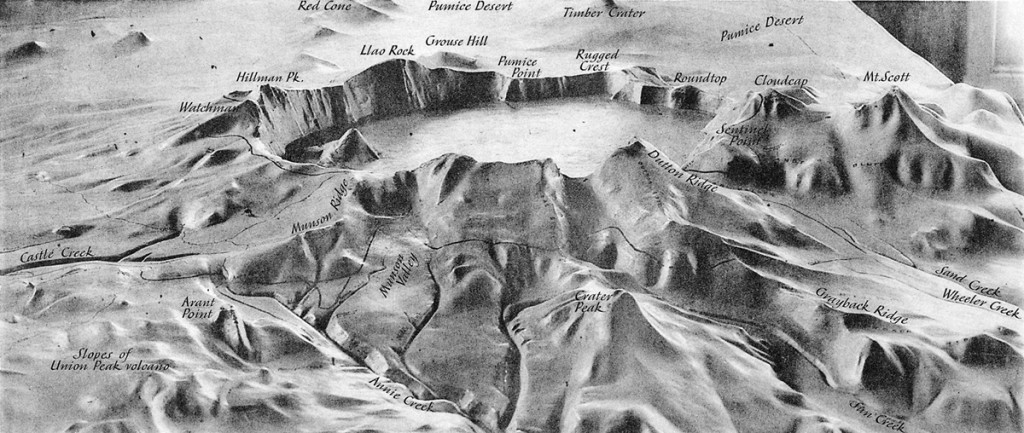The Geology of Crater Lake National Park, OregonWith a reconnaissance of the Cascade Range southward to Mount Shasta by Howell Williams
The Main Andesite Cone of Mount Mazama
Nature of the Floor and Size of the Cone
A MODEL of Crater Lake and its surroundings is shown in plate 5, figure 3. The irregular floor upon which Mount Mazama was built lay for the most part between 5000 and 6000 feet. When the mountain had reached full height its summit was probably close to 12,000 feet. The completed cone therefore rose 6000 or 7000 feet above the basement. It was in fact a much smaller volcano than many others in the Cascade Range. Mount Shasta, for example, rises 10,000 feet above its floor; its basal diameter is no less than 17 miles and its volume approximates 80 cubic miles. Mount Rainier rises more than 8000 feet above its foundation, and its lavas cover approximately 100 square miles. Moreover, the slopes of the principal cone of Mazama were much gentler than those of Shasta and Rainier.
|
Plate 5. Fig. 3. Model of Crater Lake, showing the physiographic relations between the main peaks and valleys. Note the large glacial canyons on the south (nearer) wall of the caldera; also the diminution in height of the caldera wall toward the northeast, near Roundtop. Vertical scale about twice horizontal. |
***previous*** — ***next***


